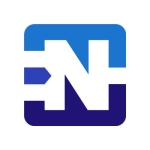We are using Fortinet FortiGate as a central firewall for our ministry, but nowadays we are preparing to join every site we have to our main data center. Fortinet FortiGate firewall will not satisfy our needs.
Fortinet FortiGate needs to improve the protection, it did not prevent us from being attacked. Additionally, Fortinet FortiGate could provide more features for WAF devices. I should not have to purchase two solutions, it would be a benefit to combine these features into one solution.
The main challenge to IT is hacking, and damaging the network software. Anything that can make a threat to our servers, accounts, VC, from an email or internet connection. We need all companies to make investments to improve the facilities of these devices in order to provide a one-package solution to protect our servers, and systems from any hacking, ransomware, virus, any command, or any other threats. They need to improve all the security features.
I have been using Fortinet FortiGate for approximately two years.
Fortinet FortiGate is a stable solution. The main risk was the devices and systems that the end-users are using, whether inside or outside the network. The VC was not secure enough. This causes some threats to our headquarters servers.
Fortinet FortiGate has limited scalability capabilities. You can't expand these devices. For example, if I was to go from 150 users to approximately 5,000, the CBU capability of the device would not suffice.
The Fortinet FortiGate local partners were good. I did not have direct contact with Fortinet support.
The initial setup of Fortinet FortiGate was very complex because our connection to other sites that were using different network topology and ISP providers. We have faced a very complex situation. The company takes approximately three to four months in order to make our system stable. Nowadays, we are going to make our provider and network with one subnet to make it easier to maintain, manage, and monitor any attack and threats from any device anywhere. This will allow us to access devices, ports, and switches to be able to take the right action.
Our network was very complicated and we are using different operating systems, databases, applications, and video.
We used Fortinet's local partners that helped maintain our financial and management systems.
We have one to two people that do the maintenance of Fortinet FortiGate.
I have not seen a return on investment using Fortinet FortiGate.
We have the full version of Fortinet FortiGate and we are on a three-year contract with a commitment of five years.
We will be replacing two of our Fortinet FortiGate devices and will move to a solution with better specifications.
I rate Fortinet FortiGate a seven out of ten.




















